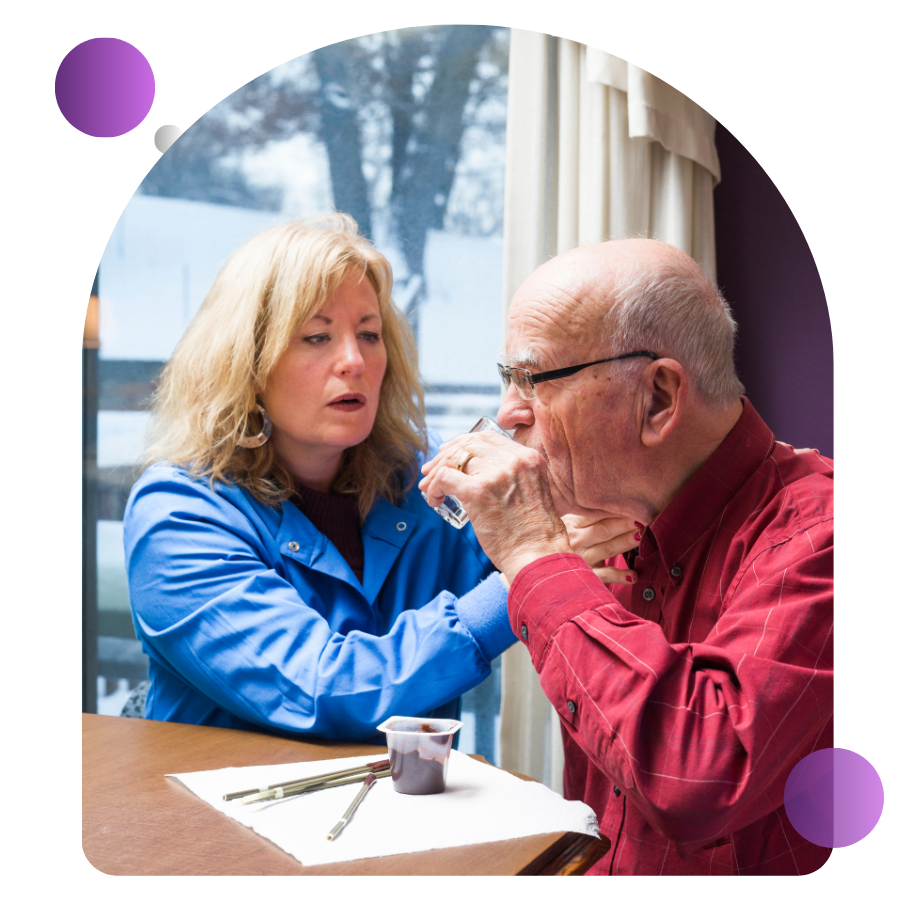

Adult Dysphagia and Communication in Post-Stroke Rehabilitation
Adult Dysphagia and Communication in Post-Stroke Rehabilitation
After a stroke, many adults experience difficulties with swallowing (dysphagia) and communication (such as aphasia, dysarthria, or apraxia of speech).
Addressing these issues early is crucial to improving safety, nutrition, speech, and quality of life.

Classification:
Dysphagia After Stroke:
- Oropharyngeal Dysphagia: Difficulty moving food from the mouth to the throat safely.
- Esophageal Dysphagia: Difficulty with food passage through the esophagus (less common post-stroke).
Communication Disorders After Stroke:
- Aphasia: Trouble understanding or producing language.
- Dysarthria: Slurred or weak speech due to muscle weakness.
- Apraxia of Speech: Difficulty planning and coordinating the movements needed for speech.
How Therapy Helps
- Speech-language pathologists (SLPs) assess and treat both swallowing and communication disorders.
- Dysphagia therapy may include swallow exercises, diet modifications, positioning strategies, and compensatory techniques to ensure safe swallowing.
- Communication therapy focuses on restoring language abilities, improving speech clarity, and using alternative communication methods if necessary.
- Therapy often works alongside occupational therapy (for cognitive-communication skills) and physical therapy(for posture and muscle strength).
Caring Through the Comeback: Post-Stroke Tips

What Research Says
- Early swallowing evaluation reduces complications:
Early assessment by a speech-language pathologist significantly reduces the risk of pneumonia and malnutrition after stroke (Martino et al., 2005). - Speech therapy improves communication recovery:
Patients receiving intensive language therapy after stroke show greater improvements in speech and comprehension than those without therapy (Brady et al., 2016). - Neuroplasticity plays a role:
The brain’s ability to reorganize itself (neuroplasticity) after stroke is key to recovery, and consistent therapy maximizes this effect (Saur et al., 2006).
FAQ about Post-Stroke Dysphagia and Communication
As early as possible — within the first 24–48 hours for swallowing screening, and communication therapy as soon as the patient is medically stable.
Yes, many cases improve significantly with therapy and time, but some individuals may need long-term strategies to eat safely.
Therapy focuses first on basic communication methods (gestures, pictures, writing) while working to rebuild speech or language gradually.
Yes, Augmentative and Alternative Communication (AAC) devices — from picture boards to speech-generating apps — can be used as bridges to support conversation.
